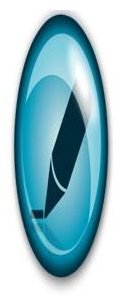How to Take Good Notes: Active Reading Strategies
Active Reading Strategies Count As A Sport - No Matter What People Say
What should you do when you get a book in your hands? Well, if you’re reading the book for school or specifically to write a paper on, it’s not enough to just read. Practice active reading.
There’s a couple goals with this article. The first is to show you how to make a book work for you by showing you how to take good notes using active reading strategies and making easy reference of the content. The second goal is to prove to you that reading is an active sport.
I want reading and good note-taking to be a part of the Olympics!
What do the Authors Say?
Stephen King said, “If you don’t have the time to read, you don’t have the time or the tools to write.” Any writer worth his or her merit will be able to provide you with a list of loved books. Great writers take the time to take great notes. You’re not working on being the next Stephen King or C.S. Lewis, I know, but it may well behoove you to learn how to take good notes on what you read.
C.S. Lewis wrote stuff. His name has become popular again lately for The Lion The Witch and The Wardrobe and Prince Caspian. Mr. Lewis, wise and crafty man that he was, also shared with the world how he wrote in his books. If you’re interested, you can click here to get a more detailed explanation of his approach
.
In short, he had this to say about how he kept notes in books – specifically, a French history book he had been reading at the time: “I begin by making a map on one end of the leaf ends: then I put in a genealogical tree or two. Then I put a running headline at the top of each page: finally I index at the end all the passages I have for any reason underlined… .”
I can almost hear you: “I don’t want to be C.S. Lewis. I don’t need to take notes like C.S. Lewis. When will you get around to helping me?”
Taking Good Notes Begins With Active Reading Strategies
If you want to write a good response paper, you need to know what you’re responding to. In order to respond adequately to a book you’ve read, it is exceedingly helpful to be able to pull up quotes, important scenes, motifs, symbols and any of the other things mentioned in my first article for this series. All of this can be accomplished easily once you learn how to take good notes. For further reading that isn’t Lewis or Adler, but is almost as good, here’s Trent Lorcher’s article on note taking, and it’s written from a teacher’s

perspective – it may well behoove you to know what teachers are looking for, and Bright Hub is a fantastic place to learn that.
While I don’t think any teacher or professor expects you to be the next C.S. Lewis or Stephen King, you can always steal techniques and lessons learned to adapt and apply to whatever you’re doing.
When you read a book with the intent of responding in an intelligent way for an academic paper, your reading shifts from leisurely to intentional and active. To help you remember what is where in the book, you put in reminders. I’m going to show you now some tips you can use, adapt them as you will, and feel free to come up with your own.
How To Take Good Notes If You Own The Book
If you are in college and taking a literature course, you have probably been to the book store. You can either return the books at the end of the semester for peanuts or own them forever. I bet you can figure out that I recommend keeping your books.
Once you buy a book, it is yours to own for the rest of your life. Many good writers would say though, that you never truly own a book until you have managed to co-author it with your own notes. One of those such people is Mortimer J. Adler Ph.D, who believed writing in a book is an act of love.
If you skim about 2/3rds of the way to the bottom, you will see a nice list of active reading strategies he used when he wrote in his books.
For your convenience, I’m going to give tips from Lewis and Adler on how to write in a book in such a way that it will produce good notes for you when you write your response paper:
-
A short running headline at the top margin – Both Adler and Lewis recommend this one, so it must be important. The idea of this is to have a running headline of major points so that you can skim easily to find what is on each page.
-
Writing questions on the bottom margin – This adapts Adler’s idea. Lewis puts running headlines at the top, and I recommend that. Adler recommended putting questions, main ideas and key points at either the top and the bottom. This way you have a headline at the top and questions at the bottom.
-
Underlining or Highlighting - Any important point, or idea that you would like to remember. To emphasize what you underline, Adler recommends also putting a vertical line in the margin next to it. Or you could use what I use in the margin, it’s quite simple and looks like this: !
-
Numbers - It just so happens that I majored in English because I hate math, but we can still use numbers. On the right margin you

want to use numbers to track a sequence. You also want to put page numbers that mention similar ideas or that can be compared together (adapted from Adler).
-
Stars, asterisks, check marks, etc., etc – Adler makes note, and I find it very helpful, to use these sparingly, maybe to pinpoint the ten or twenty most important statements in the entire book.
-
Indexing at the end of the book – Both Adler and Lewis used to index what they underlined, put an asterisk next to, or anything else they made special note of on the loose-leaf end paper, this makes for very quick reference.
-
For more on annotating, read over these tips.
How To Take Good Notes If You Don’t Own The Book
This is very simple: buy a notebook.
In the notebook you want to put the page number, a short quote that looks like this: “… quote here …”, if it’s a literary term, device or technique, if the idea is expanded on any other page, and what your reaction was.
I could end there, but I like you readers, so I’m going to do something really nice. Here’s a PDF. Also, if you’re slightly confused, here’s a PDF on how to use the table.
You’re welcome! Come back anytime.
